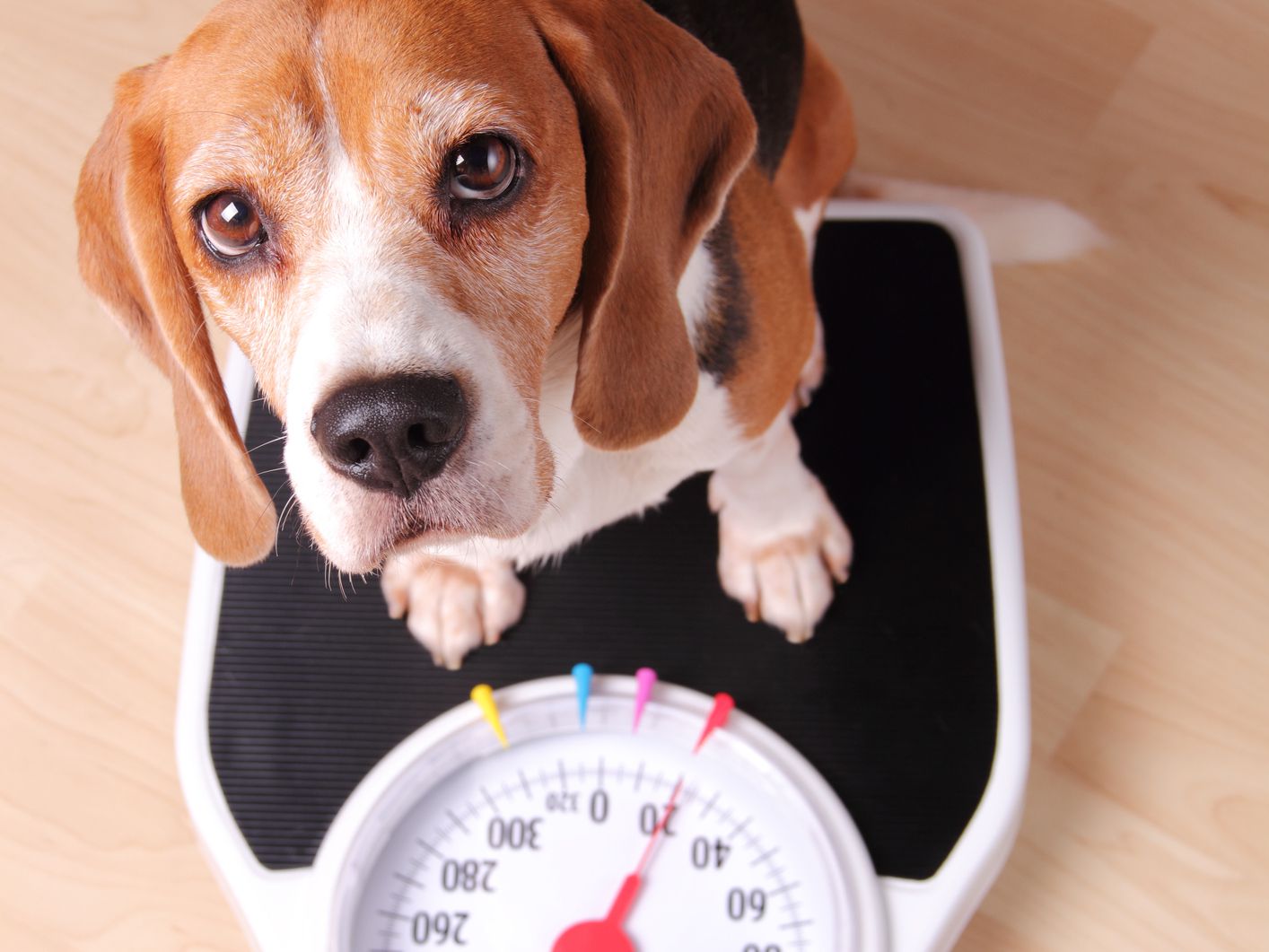
Nutritional diseases are more common in urban dogs than in rural dogs. The most common conditions are obesity and overweight. These conditions not only compromise the dog’s well-being and quality of life, but they can also increase the risk of other diseases such as diabetes, hypertension, skin problems, heart problems, etc.
To avoid these diseases, knowing your dog’s ideal weight can be a fundamental reference. In this article, we explain how to calculate it.
What Is the Physical Condition of Your Dog?
To know if your dog is in good physical shape, you must take into account two very useful parameters. One is the dog’s ideal weight and the other is the fitness score. Let’s look at each of these in detail.
Ideal Dog Weight
The Pet Obesity Prevention Association offers a chart that shows the ideal weight of a dog based on breeds and size of adult dogs. Let’s look at some examples:
– The ideal weight of a German shepherd is between 34 and 43 kilos, while the ideal weight of a French bulldog is between 8 and 14 kilos.
– The Beagle’s ideal weight is between 10 and 25 kilos.
– Finally, the ideal weight of the Yorkshire should be less than 3 kilos and other breeds like the Chihuahua and the Maltese find their ideal weight between 4 and 6 kilos.
This table can be an excellent reference since we can find the ideal weight of our dog. Of course, we must not forget that it is only a suggestion and that the data it offers us are indicative. We must keep in mind that two dogs of the same breed can present a great variability in terms of constitution, shape and size. In other words, a dog of a certain breed can have a good physical condition even if his ideal weight is outside the range indicated in the table.
So, if you check your pet’s ideal weight on the World Association of Small Animal Veterinarians chart and find that it is higher, the next thing to do is to differentiate between obesity and overweight. In the case of obesity, a dog is considered overweight if it weighs between 10 and 19 percent more than its ideal weight. However, if he weighs 20% more than his ideal weight, your dog is obese.
Body Condition Score
This is a subjective and practical way to assess the amount of body fat in a dog by simple observation. To help you, the World Small Animal Veterinary Association (WSAVA) Global Nutrition Committee has developed a table that rates the dog’s body condition with values ranging from 1 to 9:
- Scores between 1 and 3 indicate that the dog is lean: 1, specifically, indicates extreme leanness.
- Scores between 6 and 9 indicate overweight: 9, which is the highest score, means that the dog is obese.
- The ideal score is between 4 and 5: this is the optimal body condition. To do this, the dog’s ribs can be easily palpated because they have a minimal coating and do not have excess fat. Also, the waist can be easily seen and the belly is tucked in, not flabby or hanging.
The American Animal Hospital Association, also has a scale similar to the WSAVA. In this case, it is 5 points and the ideal weight of the dog is about 3.
What Can You Do to Help Your Dog Maintain His Ideal Weight?
As with humans, it is essential that your dog maintain an ideal weight for optimal physical condition. This is the only way to ensure his well-being and optimal health. In other words, maintaining these parameters is synonymous with your dog’s quality of life. In order to do this, we suggest that you take the following factors into account:
– Exercise: Daily physical activity for at least 30 minutes is essential. For your dog, it is a motivating experience that stimulates and entertains him. In addition, this daily exercise can be your daily walk, a play session or a dog training session, among other options.
– Nutrition: Good nutrition is essential for your dog. It is therefore advisable to offer him a diet that meets his physiological needs at all times. And that’s because the same diet doesn’t work for puppies, adults, pregnant bitches or neutered dogs. And remember that if you change your dog’s diet, you should do it gradually so that your dog does not suffer any gastrointestinal discomfort.
– Health: regular check-ups at the veterinarian’s office should not be neglected either. In addition, a deviation from your dog’s ideal weight could be due to an illness of some kind. You should therefore regularly evaluate your dog’s health to rule out any disease.
There you are! After reading this article, what did you find about your dog’s weight? Is it ideal or overweight? Let us know in the comments below.







